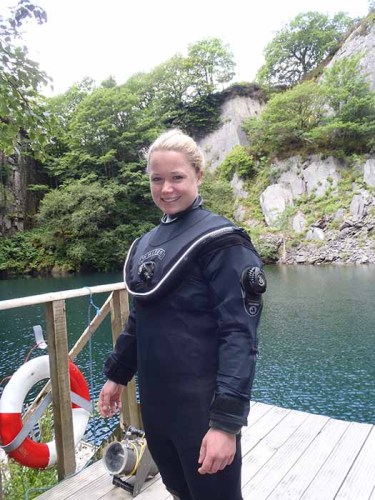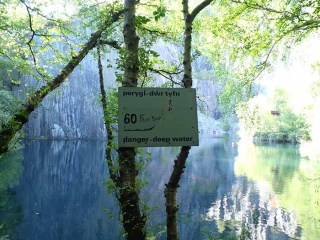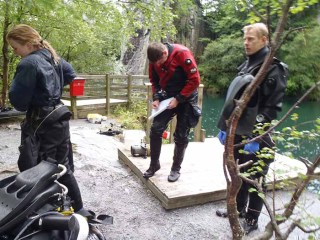The word “trim” will now only ever mean one thing to me. For anyone who has completed the Global Underwater Explorers (GUE) Fundamentals course you will know what I mean. For anyone that hasn’t…. it can best be described as a neutrally buoyant skydiver jump stance and god forbid should you not be demonstrating trim at all times during your course, and at any other time you are being watched by a GUE diver! I am over exaggerating of course, but not by much. The GUE Fundamentals course is thorough and intense and it made my body hurt. However, I have to say it is more than worth the effort it demands. It undoubtedly made me a better diver with a renewed skills set and a zealous interest to pursue the cave and technical side of GUE training.
Rich Walker, one of very few GUE instructors in the world, was kind enough to let me join a GUE Fundamentals class he was running in North Wales, UK. The course ran over 4 days, and I did a total of 6 dives. These training dives encompassed an array of different skills from mask clearing to SMB deployment. Sounds easy enough. But no, this all has to be completed whilst being neutrally buoyant and – of course – in the trim position. Being someone who doesn’t tend to struggle with buoyancy control I was challenged on this course – getting accustomed to a new Halcyon wing and Whites drysuit made my task a little more complex. Yet after 4 dives I was getting a feel for them both and I am certainly a big fan of the Whites drysuit. It offers optimal maneuverability. I was concerned this would impede on my comfort in terms of keeping warm, but with my Fourth Element dry base and arctic thermals on underneath I had nothing to fear. The flexibility this suit offers was crucial during the course as reaching my tank valve was a pass/fail skill. It also helped my ability to remain in the trim position.
Thanks to Rich I finished the course with a thorough understanding of the need for equipment standards. He had a great deal of patience and consideration when it came to my poor prior knowledge – and perhaps somewhat ridiculous questions – regarding GUE equipment. Being streamlined is important in many diving situations, but GUE really hammer this point home and make it a necessity. Makes sense if you are going to be squeezing through a minute cave system! Thus, when you dive GUE you dive with a specific equipment configuration. Although not too different to the common configuration, it was an added challenge when completing some skills: sharing air with your buddy involved pulling a regulator hose over your head and popping your alternate in your mouth from a neck cord. But again – it all makes a lot of sense and in practicality and necessity terms it is a faultless way to dive.
The GUE Fundamentals course allowed me to solidify the foundations of my dive skills. Simultaneously, it made me very aware that I have a lot of skills to build upon. I now feel ready to tackle the more technical side of diving and I am certainly more confident. I have realised there is more than one way to dive: different people prefer different ways; different dives demand different ways; different equipment is designed for different ways. Having the knowledge to choose what is right for a specific dive in specific conditions is an invaluable ability, which can only be gained by learning and trying out different ways.



